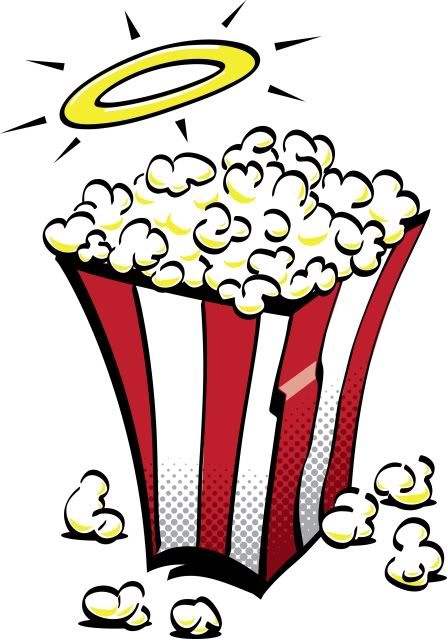
June 4, 2009
Kwaidan (1964)
Should I see it?
Yes...if you're a film geek.
Short Review: A horror movie without the horror - and that's actually a good thing.
This is one of my favorite films. Consisting of four Japanese ghost stories with fantastic set work and mouth-dropping cinematography, this film is a rare treat. This is a different kind of horror movie. The four short films are less about the characters being haunted by ghosts than by their own pain, guilt and burdens. This is less a series of horror stories and more of a samurai Twilight Zone.
If you are a fan of The Ring or The Grudge, and you don’t mind subtitles, this film may work for you. This is the grandfather of these films. As with Ringu (the original Japanese version of The Ring) the stories all slowly build to satisfying conclusions. This differs to most horror films made in the West today, which are in a hurry to get to the gore and are almost never satisfying.
The four stories are as follows:
The Black Hair
This is a simple story about a poor samurai who abandons his young bride and lives to regret it. The first of the films shown, this story is a perfect set up for the remainder of the movie. The dark, brooding story is presented in equally morose scene work and lighting. The story is simple and offers an easy introduction to the strange worlds the film offers. If you’re unsure about watching a foreign film, I would suggest trying out this first story to see if the film will match your tastes. You must remember however, the point is not to be scared – these films are far from frightening. It is about character and story not cheap thrills.
The Woman in the Snow
This film shows the visual brilliance of Yoshio Miyajima’s cinematography. Even if you’re not thrilled by the narrative content of the film, the scenery may just keep you watching. This section tells the tale of a poor woodcutter who survives a run-in with a vicious demon in the woods. The woodcutter promises the demon he will not tell a soul about their encounter in exchange for his life. Years later we find out what happens when the woodcutter breaks his oath.
This portion of the film builds on the ground laid in The Black Hair. Where The Black Hair is soaked in darkness and brooding scenery, this short film is glowing with the shine of snow and the haunting glares of eyes literally looking down from the sky.
The eyes in the sky I mention may indicate to you that this is a visually odd movie – it is. The films are clearly shot on sound stages. There are obvious backdrops and very theatrical lighting. It is amazing but the backdrops and intruding lighting and scenery actually work to improve the film. The fake sets offer a strangeness and falseness to the worlds that only serve to set the character’s lives further off kilter.
Hoichi the Earless
This is the reason you'd watch the movie. From the absolutely enthralling battle sequences to the creepy ghost story that follows, this piece carries the whole film.
The battle sequence may not be for everyone. Again, we have a scene presented on a sound stage in front of easily identifiable backdrops. The battle is surreal and dreamlike rather than realistic. In a stroke of genius, the narrated battle sequences are inter-cut with images from paintings of battles. The ancient paintings support the strange visuals of the battle (the disjointed colors, the backdrop, the sharp angles, etc.) It is as if you’re watching a sort of living painting of a battle long since over.
The remainder of the film centers on Hoichi, a blind monk who is lured by the lost souls of the ancient battle to their hidden temple. At the temple Hoichi plays songs to the souls of the great war. Hoichi is seduced by the lost soul’s flattery and respect but at what cost to his life?
I simply cannot offer enough praise of this portion of the film. This part of the film blew me away with its story and its design. You can scoff at the rest of this film, but this section will command you attention. This is simply brilliant film making and this section will show why this film won the Jury Special Prize at 1965 Cannes Film Festival.
In a Cup of Tea
This is the weakest of the four stories. This simple little ditty is about a man keeps seeing the image of a smiling ghost looking back at him in his drinking cups. Soon the smiling ghost and his cohorts descend upon the haunted man.
This section of the film is disappointing. Like the other portions of the film it is a joy to watch for its look and the great acting, but the story itself is lacking.
This classic film is a pleasure to watch if you have an ounce of film geek in your veins. If you’re one who doesn’t get into foreign films (foreign in this case meaning non-Western based) and/or hates subtitles you’re best just moving on. Personally, this is one of the better films I’ve seen in months. I would place this in one of the better films ever made.
Related Reviews:
Japanese films
Samurai 1: Musashi Miyamoto (1954)
Sword of Doom (1966)
Other Critic's Reviews:
Combustible Celluloid
The Criterion Contraption
Labels: film, ghosts, horror, Japanese cinema, movie review
Share
Previous Posts




Good News Film Reviews LLC 2004-2010 - used with permission
Images, video and titles are the property of their respective copyright holders. Good News Film Reviews LLC claims no ownership or connection to them.
The views expressed on this site are not the opinion of any advertiser or external entity.
While we take care to only link to responsible entities, Good News Film Reviews LLC takes no responsibility for the content linked from this site. There are sharks in the waters. Surf at your own risk.
The Template is generated via PsycHo and is Licensed.






















0 Comments:
Post a Comment
<< Home